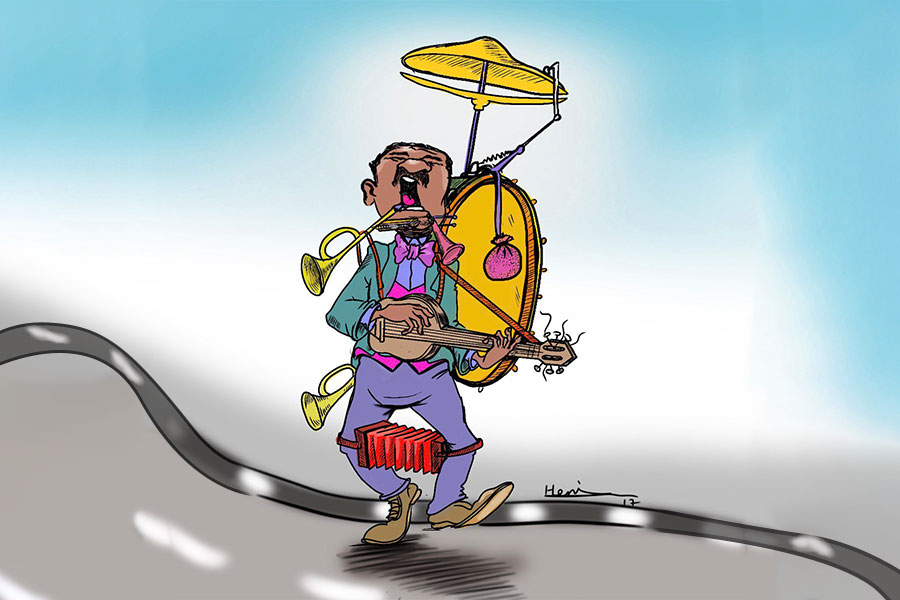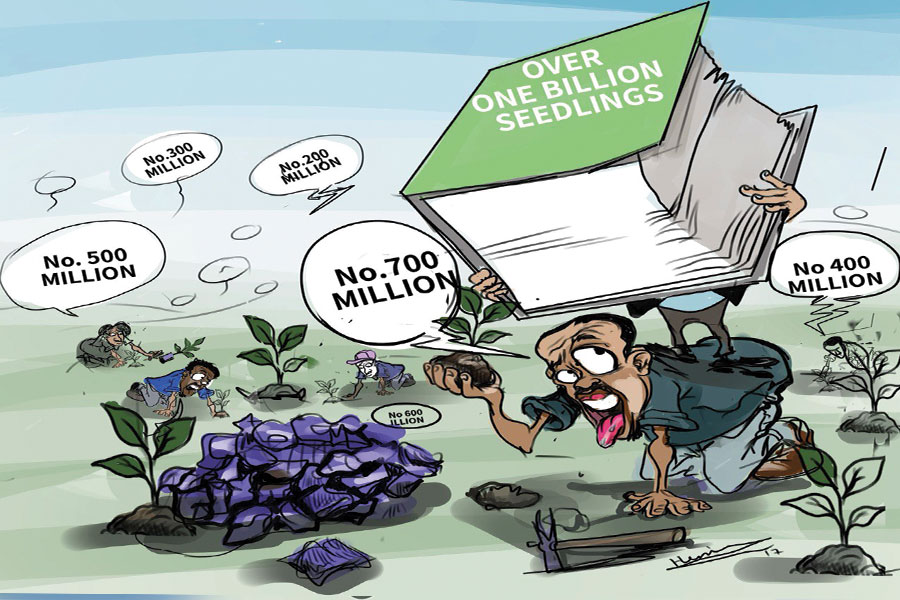
Photo Gallery | 138432 Views | May 06,2019
Jun 7 , 2025. By Carolyn Chisadza ( Carolyn Chisadza is an associate professor of Economics at the University of Pretoria )
Despite all the progress that has been made toward gender equality globally, many are still tempted to view armed conflict as primarily the domain of men. Women often prove decisive in such settings, including combat, non-combat roles, and leadership positions. Nonetheless, they are routinely sidelined in formal peace processes and post-conflict governance. This pattern reflects a moral and practical failure.
During armed conflicts, women become more vulnerable to genocide, trafficking, slavery, and sexual violence, with all the associated health risks and psychological trauma. This alone earns them the right to participate in peace processes. But women are not only passive victims of conflict, as we have seen in Ukraine. They make profound wartime contributions on the battlefield, as well as in civil society and as advocates for peace.
In this sense, women often increase their agency during times of conflict, despite the risks they face. But when they are then excluded from peace negotiations and what follows – as is the case, so far, in Ukraine – these agency gains are reversed, with outdated gender norms reasserting themselves. This is especially true in conflict-affected countries with more entrenched patriarchal structures.
Legal frameworks promoting women’s inclusion in conflict resolution, peace-building, and post-conflict reconstruction have so far failed to turn the tide, owing partly to implementation and operational challenges. For example, United Nations Security Council Resolution 1325, adopted in 2000, “urges all actors” to increase women’s participation and “incorporate gender perspectives in all UN peace and security efforts.” However, as of 2028, the number of women signing peace agreements had not increased much.
This has important implications for the content and outcomes of peace agreements. In a recent study, my co-authors – Matthew Clance, Romuald Meango and Charl van Schoor – and I used natural language processing to examine the use of gender language (including words like man, girl, boy, her, his, female, male, wife, and daughter) in peace agreements reached between 1990 and 2023. We created a “gender bias index," ranging from -0.6 to 0.6, with a lower score indicating lower use of gendered language and, thus, a reduced focus on gender-based outcomes.
None of the peace agreements we studied had a particularly high gender bias index, but even those that used more gendered language, which reflected a somewhat "positive" bias toward women, were not necessarily associated with marked improvements in women’s agency. Even frameworks that were gender-sensitive (acknowledging gender inequality) did not bring about meaningful change.
The problem is that mentions of gender did not accompany concrete requirements, let alone monitoring and enforcement mechanisms. For example, a peace agreement might advocate for increased women’s political participation, but include no targets to be met, and thus produce few, if any, results. This approach can even harm gender equality, by giving the impression that action is being taken when it is not.
Other studies show that peace agreements with disarmament, demobilisation, and reintegration (DDR) components rarely mention women. This compromises the post-conflict rehabilitation of women combatants, who might be excluded from the kinds of interventions aimed at their male counterparts.
Evidence shows that including women in conflict-resolution and peace-building processes leads to better outcomes for everyone. As a 2018 analysis found, there is a “robust correlation” between the inclusion of female delegates as signatories of peace agreements and the durability of the ensuing peace. Agreements signed by women tend to include more provisions focused on political reform, and boast higher implementation rates for such provisions.
In El Salvador, the 1992 agreement that ended the country’s 12-year civil war extended DDR benefits to women fighters, and included non-combatant female members of the opposition movement in reintegration programs. Women went on to play a stabilising role in reintegration processes and to make major contributions to reconstruction efforts. The communities that received more consistent, systematic support through reintegration and reconstruction programs made greater progress on gender equality and, ultimately, on development.
Similarly, in Liberia, women were involved in negotiations to end more than a decade of civil war in the early 2000s. Female representation in politics subsequently increased markedly, with Ellen J. Sirleaf in 2005 becoming the first female elected head of state in Africa.
The message is clear. Women should be included in all dimensions of any peace process, from designing, negotiating, and signing agreements to implementing post-conflict stabilisation and reconstruction plans. They should also have access to all relevant benefit programs, such as those related to DDR, as well as initiatives addressing gender-specific needs.
More broadly, peace processes should recognise and directly promote women’s agency. This does not mean paying lip service to women’s needs and contributions while relying on ambiguous language to minimise accountability. Rather, supporting women’s agency in making peace and forging the post-conflict future demands concrete, enforceable measures to uphold women’s rights and expand their participation in all forms of decision-making.
PUBLISHED ON
Jun 07,2025 [ VOL
26 , NO
1310]

Photo Gallery | 138432 Views | May 06,2019

My Opinion | 133983 Views | Aug 14,2021

My Opinion | 130540 Views | Aug 21,2021

Photo Gallery | 128679 Views | Apr 26,2019

Aug 23 , 2025
Banks have a new obsession. After decades chasing deposits and, more recently, digita...

Aug 16 , 2025
A decade ago, a case in the United States (US) jolted Wall Street. An ambulance opera...

Aug 9 , 2025
In the 14th Century, the Egyptian scholar Ibn Khaldun drew a neat curve in the sand....

Aug 2 , 2025
At daybreak on Thursday last week, July 31, 2025, hundreds of thousands of Ethiop...